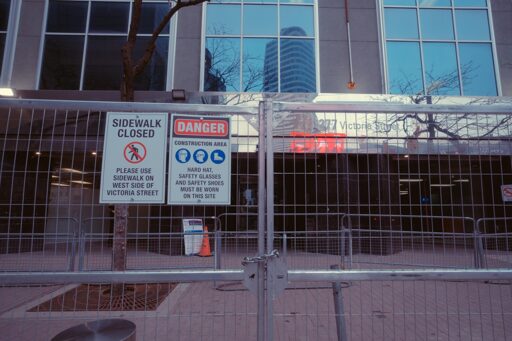But in comparison to a physical location, outreach teams are limited in the resources they can offer, says Mia Hershkowitz, a harm reduction worker. For instance: Hershkowitz describes how outreach teams can only carry small amounts of oxygen due to its weight. But as terrifying amounts of veterinary tranquilizer poison the unregulated supply of drugs, Naloxone, the medication commonly used to reverse opioid poisoning, is simply not strong enough. People who are overdosing often need oxygen to help bring their heart rate back up – but outreach teams rarely have access to it.
According to Toronto’s Drug Checking Service, more than half of all fentanyl checked in the first two weeks of April contains some form of toxic tranquilizer.
That situation would become more severe under the Safer Municipalities Act, a new bill proposed by the Ford government. If passed, it would let police ticket and arrest people using illegal drugs in public, slapping them with harsher punishments including a fine of up to $10,000 and being jailed for up to six months.



deleted by creator
I don’t think Dofo is taking the right approach, but sanctioned consumption sites I don’t think are the way to go.
We shouldn’t be normalizing drug use, and they are very controversial.
My preference is to lean into voluntary treatment centers. Make space available so the moment someone decides they need help, space is available for them.
Agressively advertise treatment options in areas trafficked by addicts.
We need to work to shut down the use and availability of fentanyl and related opiates.
The pearl clutching around “normalizing drug use” is literal propaganda.
These systems help people get off this stuff, it’s not free fun time haha funny drug time.
Failing to understand how these systems work is not justification for pushing propaganda to make more disenfranchised people die of drug overdoses.
People who stop supporting programs that are proven to work because they don’t like how the proven programs work is insane. It’s insane.
deleted by creator
I don’t disagree that having professionals nearby can prevent overdose / accidental death.
My concerns are: Safe consumption sites are controversial, and their support causes broader backlash. Usage rates are low and not a good use of resources.
Proponents are misusing data:
users of SCS would tend towards wanting help anyway and don’t speak to broader efficacy.
‘Lives saved’ don’t take into account any increase in use from a system perspective. That is to say, reduced stigma I believe increases drug use and death. Studies I’ve seen look at a micro level but not macro level. Example, “we prevented 10 deaths”, but they dont take into account any increase in drug use from its normalization.
It’s OK to feel shame for being addicted to drugs. But I also get we don’t want people hiding away and dying. Stopping use should be the goal.
The people on the front lines have an important perspective, but they aren’t seeing the whole story.
Aren’t cities moving away from SCS because it’s not working?
deleted by creator